Advertisement
Meet Jimmy Raye, The Passionate Salem Shoe Collector Whose Treasures Enrich A New Exhibit
Resume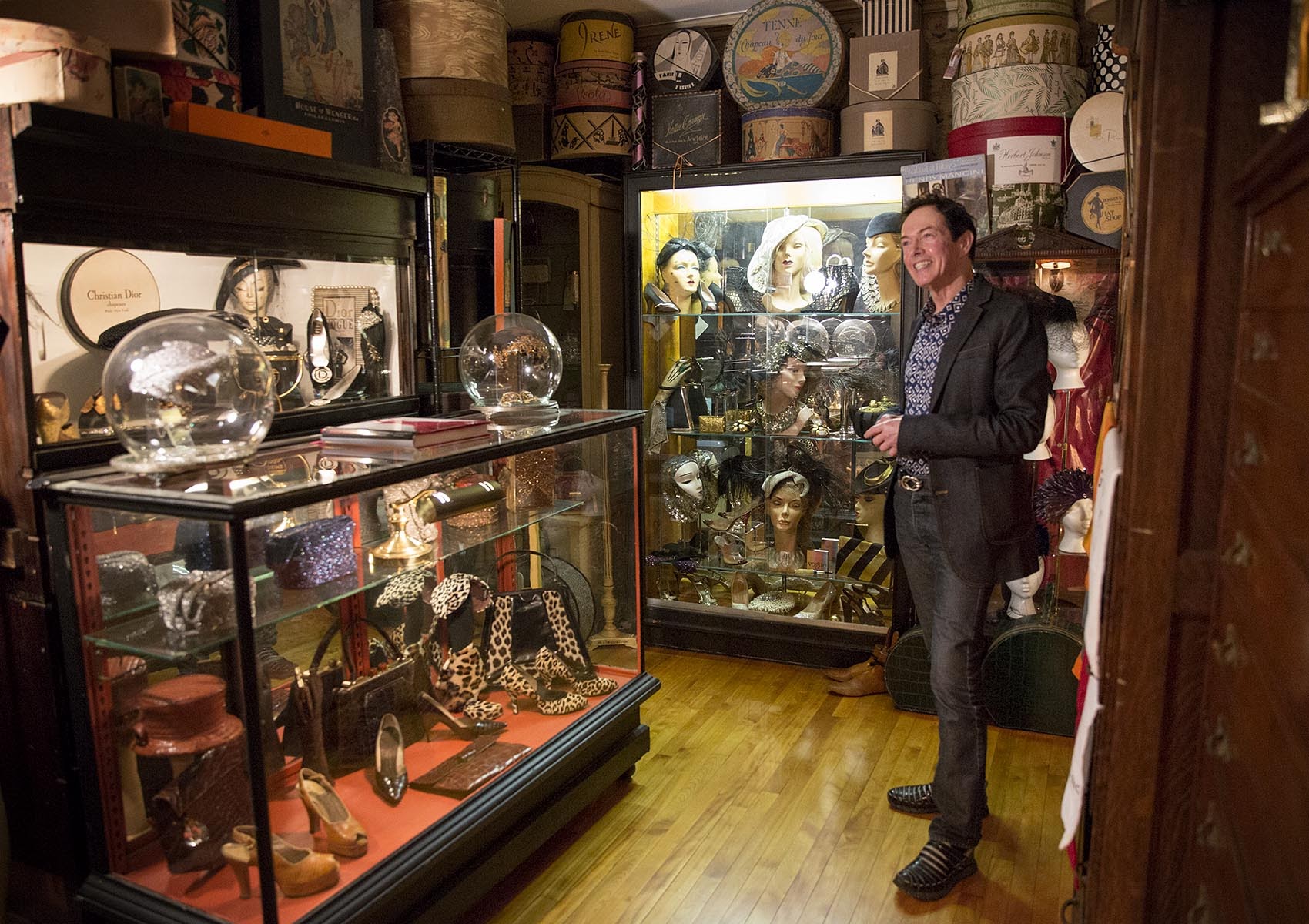
Shoes can reveal a lot about a person. Are they sensible? Flamboyant? Status driven? Wealthy? Active? Now a new exhibition at the Peabody Essex Museum shows how deep our connection to footwear can go.
"Shoes: Pleasure and Pain" uses more than 300 artful pairs — from embellished, pointy stilettos to antique, embroidered Asian slippers, to Elton John's fanciful kicks — to explore the enduring allure and social power shoes have had over the centuries.
Turns out one of the exhibition's lenders is a passionate, local collector who’s sharing a small slice of his historic trove with the museum.
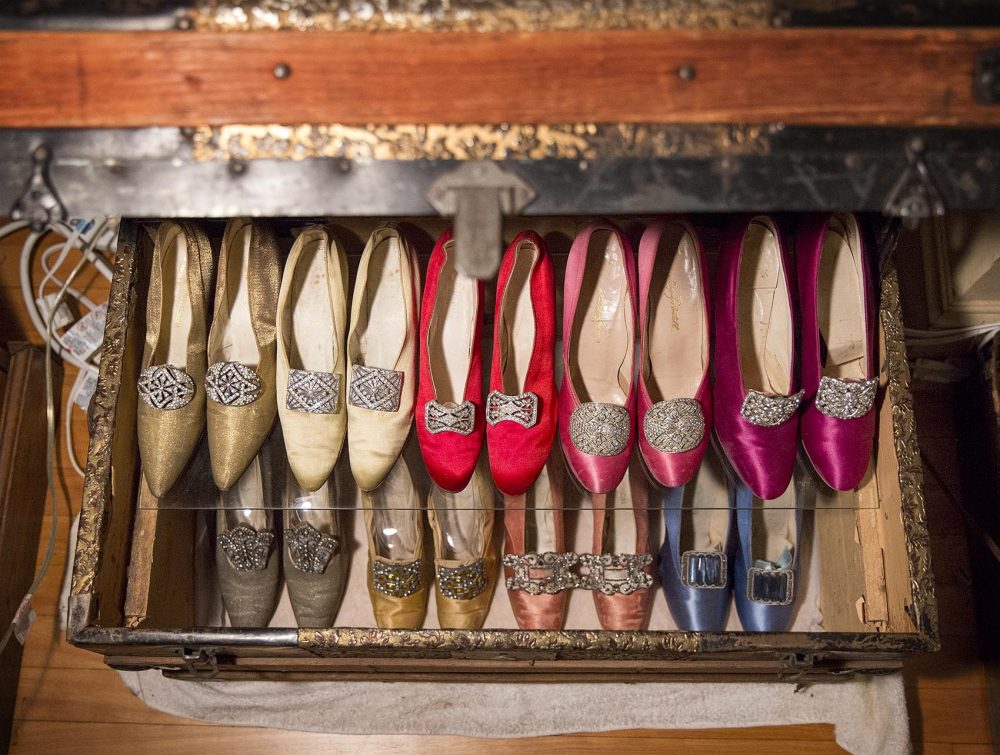
Jimmy Raye’s 1917 house in Salem is actually like a museum. His meticulously designed displays of hand-crafted vintage and antique clothing seem to be around every corner. He starts a whirlwind tour of his shoe stash with the ones on his own feet.
"The shoes I have on are Puma sneakers," he begins. But they're not just any Puma sneakers. They have shiny, black patent leather striping and Velcro closures.
"You can put them on and take them off very easily," he explains. "You could also wear them with a tuxedo pant."
A Lifelong Passion
Raye’s fascination with footwear started in Lynn, when he was a kid growing up in a working class family.
"All the way from elementary school — because I could only have one pair of shoes," Raye, the youngest of nine children, recalls. But that single allotted pair was always of his own choosing.
Raye went on to be a dancer in the Boston Ballet, but he always found time to sift through thrift stores and estate sales searching for precious finds. The lithe 64-year-old has amassed a stunning, story-filled collection and he's eager to share it.
With a giddy laugh Raye warns me that there's a lot to see. It becomes immediately clear that a single visit will just scratch the surface.
He points to a pair of silver plated slip-ons from India worn by a 104-year-old ballerina in New York. In the same front room there are tall, laced athletic shoes propped beneath a sepia-toned group portrait.
"This is a gymnastic shoe from the 1920s, and there's my father," Raye says peering into the picture. His dad was an acrobat who also worked for General Electric.
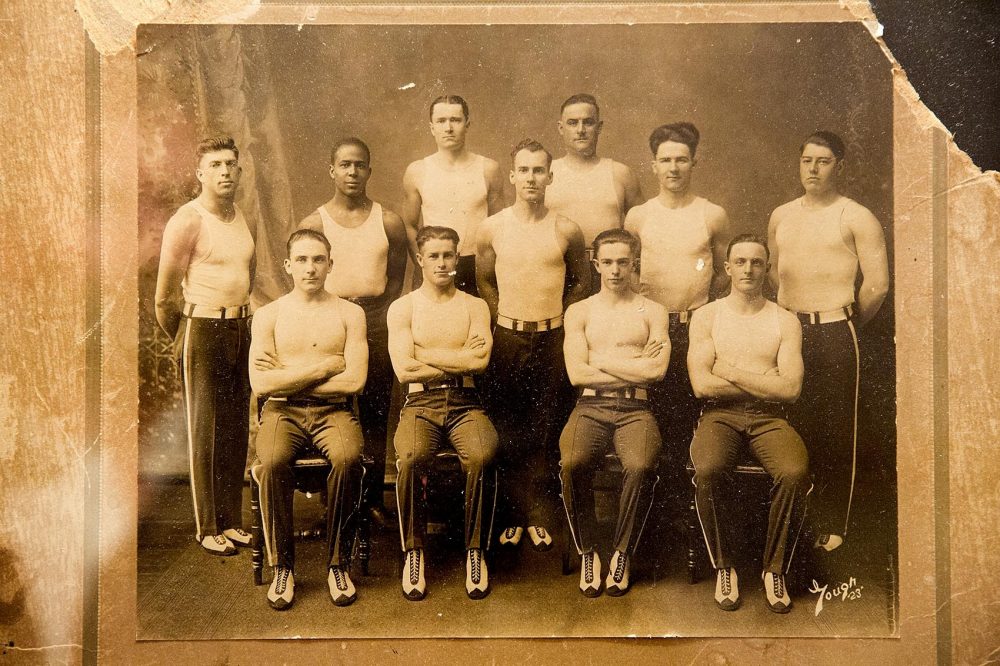
In a nearby alcove Raye gushes affectionately over a pair of 1920s black satin shoes that have what's known as a Louis heel and a deco-patterned buckle. They rest not far away from 1960s haute couture platforms he says were inspired by wooden lifts worn by women in the East for centuries.
Raye lives with his shoes. Some are out in the open, he nestles others safe from dust and light in trunks, drawers, and backroom spaces. For the next few months a small fraction of his collection is on view a few blocks away at the Peabody Essex Museum. Raye says the exhibition's title, “Shoes: Pleasure and Pain,” captures the tension between form and function.
"When you look at a shoe sometimes the shape is really beautiful — but it might not be practical," he muses.
For Raye shoes are wondrous, wearable sculptures. His dancer's eyes see lines and movement as he peers into a drawer filled with flapper-era shoes similar to the ones he loaned to the museum.
"It’s a passion," he says about his collecting. "Some people say obsession — and I say a passion. Because they’re so beautiful, and I’m preserving them, and they’re art."
Creating An Identity
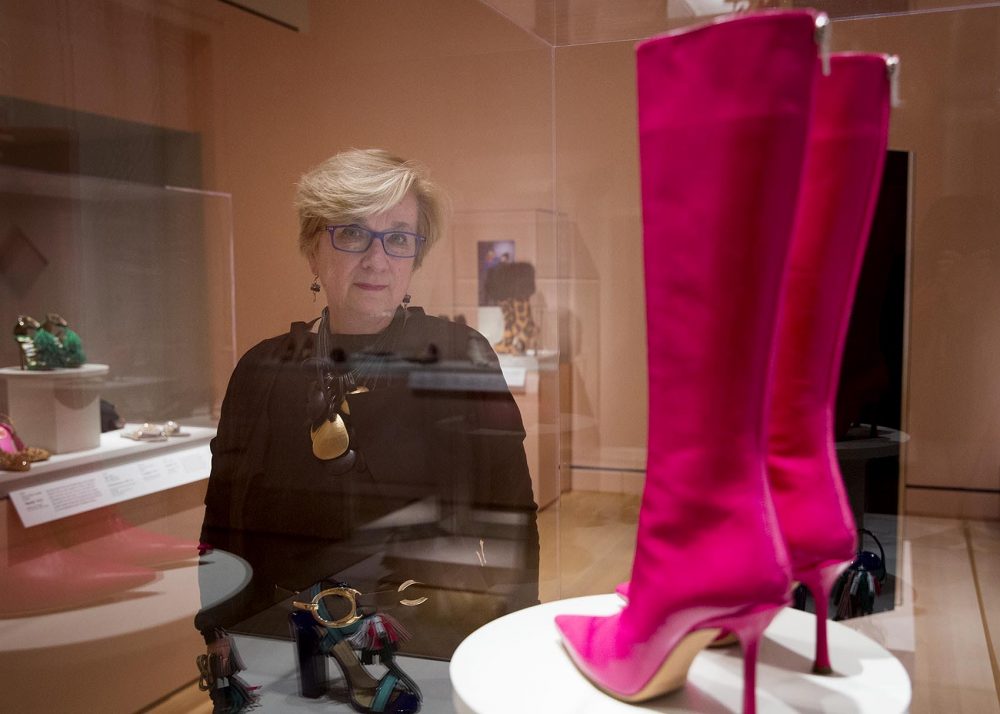
"Many people may not actually stop to think about the significance of shoes in their lives," says museum deputy director and curator Lynda Roscoe Hartigan. She believes what we choose to put on our feet can be seen as extensions of ourselves. "Either because it’s helping us convey our identity, our femininity, our masculinity, our status in a culture or in a group."
That idea drives the exhibition, which originated at the Victoria and Albert Museum in London. It includes hundreds of shoes culled from other collections. But as Hartigan prepared to bring the show to Salem she knew she wanted to find fun and meaningful ways to make it local. That’s where Jimmy Raye comes in.
"One of the things that’s really impressed me about him as I’ve gotten to know him better is his knowledge," Hartigan says.
The curator says the breadth of Raye’s knowledge distinguishes him from more materialistic or even notorious shoe collectors like Imelda Marcos. But while selecting shoes from Raye's vast holdings was exciting, it was also a bit daunting. In the end Hartigan honed in on his early 20th century women’s dance slippers.
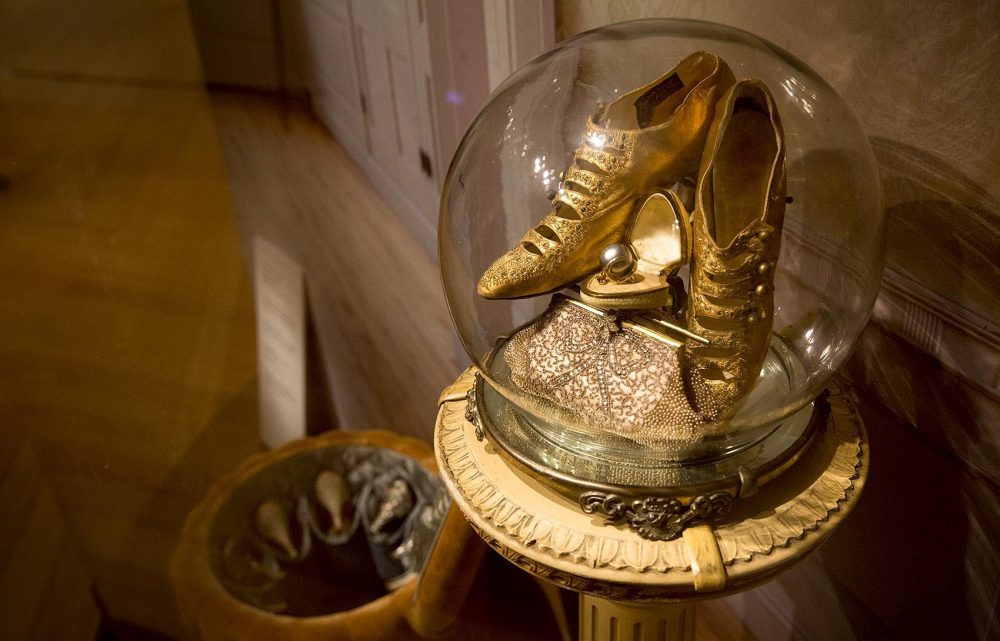
"So just think of Ginger Rogers and those wonderful ballroom shoes that ballroom dancers still wear today," she conjured, "because there’s something about the heel, something about that strap, how it balances you and has supple materials."
Raye’s shoes are in a section of the show devoted to shoe collection. More contemporary boots and pumps from another North Shore collector, Lillian Bohlen, are included, too. They're arranged by hue, as Bohlen has them in her showcase closet at home.
In the adjoining gallery space Hartigan included another local tie-in: elegant shoes made in Massachusetts.
She says the museum has the country’s largest collection of shoes, and she felt it was critical to highlight the role New England cities such as Haverhill have played in the design and manufacture of footwear throughout history.
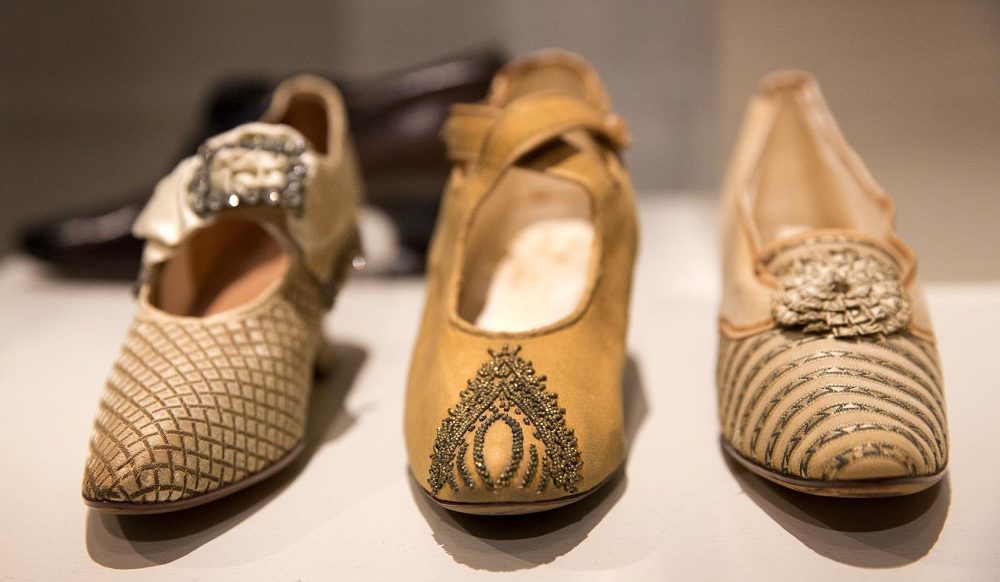
"The shoe industry has meant a tremendous amount to our part of the world, and we really wanted to showcase that because out of the thousands of shoes we owned we also had to find a good angle," Hartigan says.
The exhibition’s full scope is international and spans centuries. There are contemporary shoes made of Plexiglas. Some are 3-D printed. Hartigan's favorites are pointy leather stilettos by designer Christian Louboutin that are adorned with vibrant red feathers.
She says high heels have long been closely linked with sexuality, seduction and status.
Just A Taste
"There are incredible platform shoes that women wore in Egyptian baths," Hartigan says. "For one, they kept their feet off the cold tiles — but it was also because they could afford to go to the baths and wear those kinds of shoes. So you get the notion very quickly of how succinctly shoes can convey class distinctions and cultural distinctions."
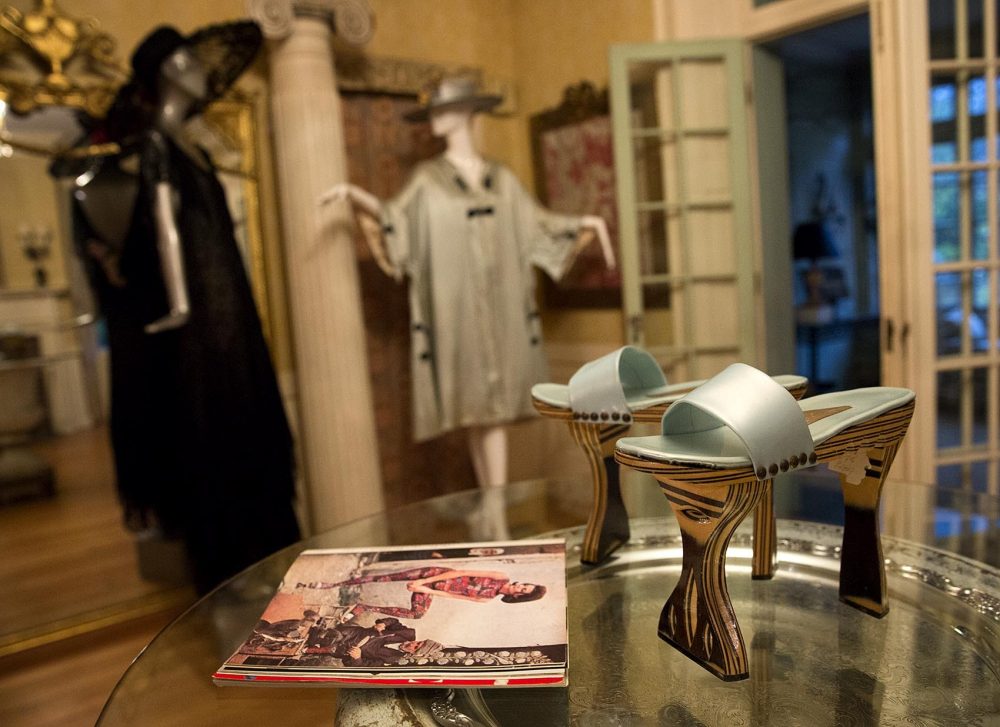
But elevated shoes weren't just for women. Hartigan says powerful kings donned some of the earliest high heels as part of their decked out ensembles.
The exhibition catalog contains more than a dozen deep-dive essays on shoes and the role they've played in world culture. One explores foot gear as potent symbols in pop culture and mythology. Think Dorothy's ruby red slippers or Hans Christian Andersen's "Red Shoes."
Harigan says stories and fairy tales also illuminate shoes' transformative power.
"The Cinderella shoe is the perfect example," she says, "from rags to riches."
But real shoes like those imagined dainty glass slippers have also debilitated women, because they're too short, too narrow or too high. That dark side of footwear is expressed in the exhibition. For example, you can see minute, embroidered shoes from China, where for centuries it was common practice for woman to bind their daughter's feet to fit into what were seen as perfect 2-3 inch "lotus shoes."
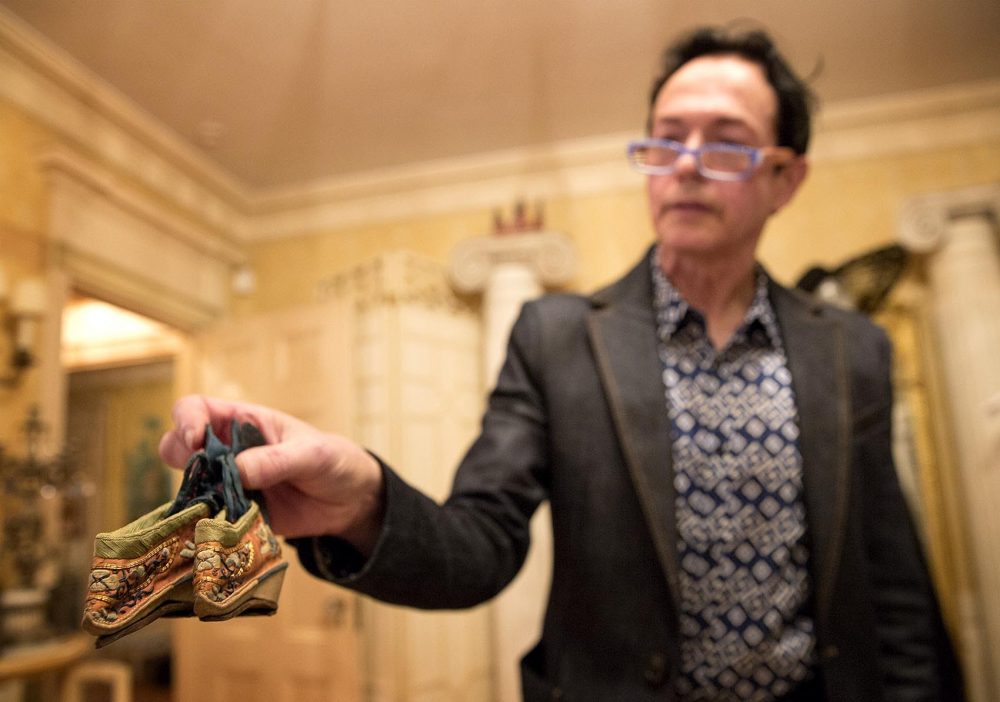
Like the tour of Raye's home, this run down provides just a small taste of what's to be learned from the exhibition. Hartigan hopes the experience of walking among the array of shoes will inspire visitors to reflect on our personal and complex relationship with this particular human invention.
"I suspect that between fire and the wheel, shoes must’ve been next," she said, laughing, "they're right up there in terms of the necessity of what we wanted to invent for ourselves.
The curator hopes you’ll consider what your own shoes might say about who you are, too.
Here's a look at a few more shoes on display at the PEM:
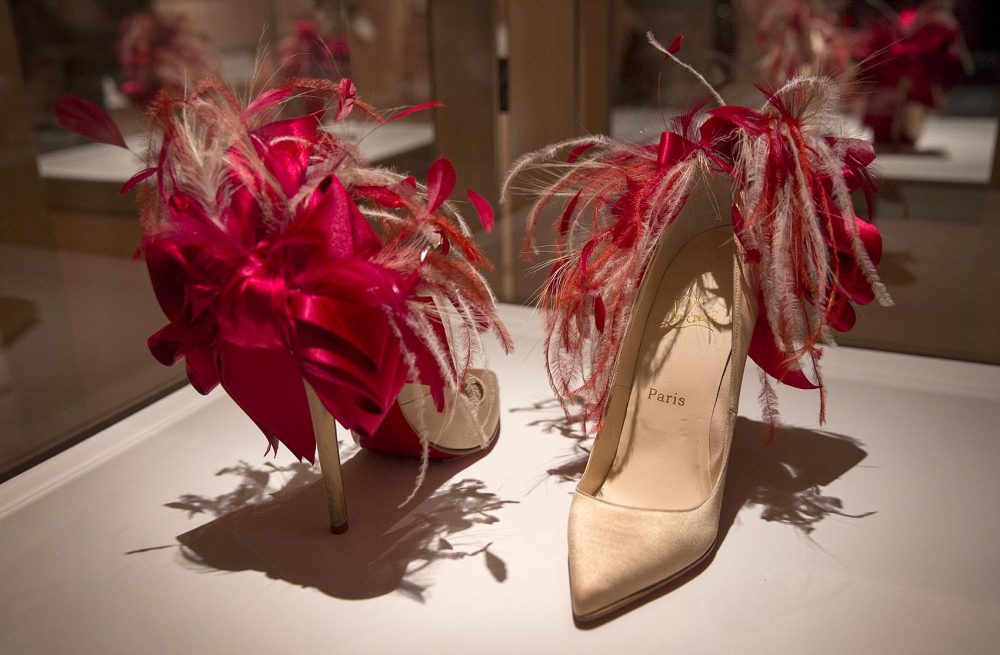

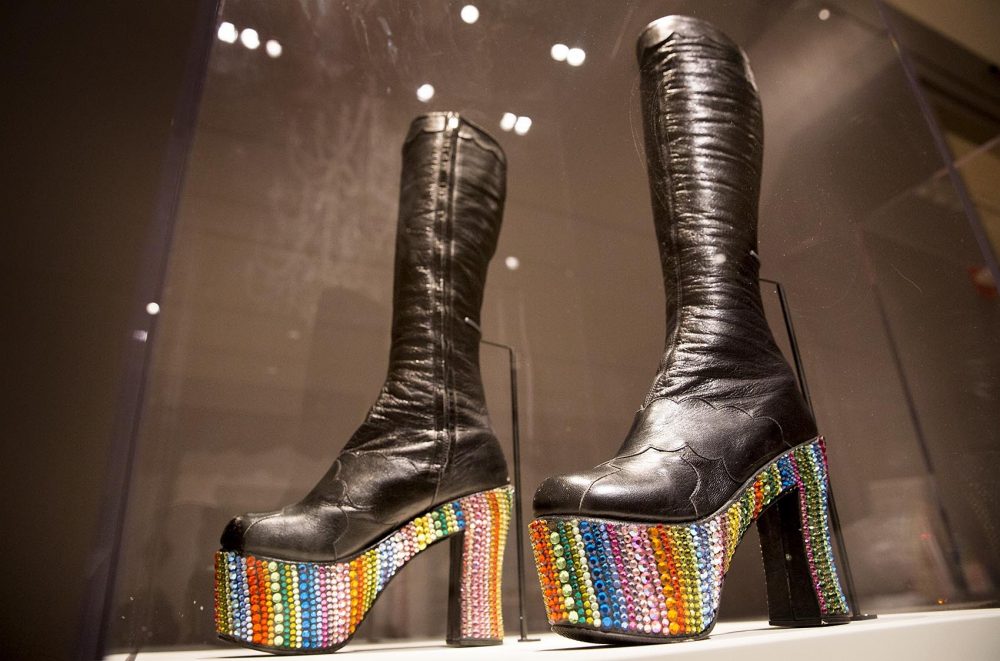
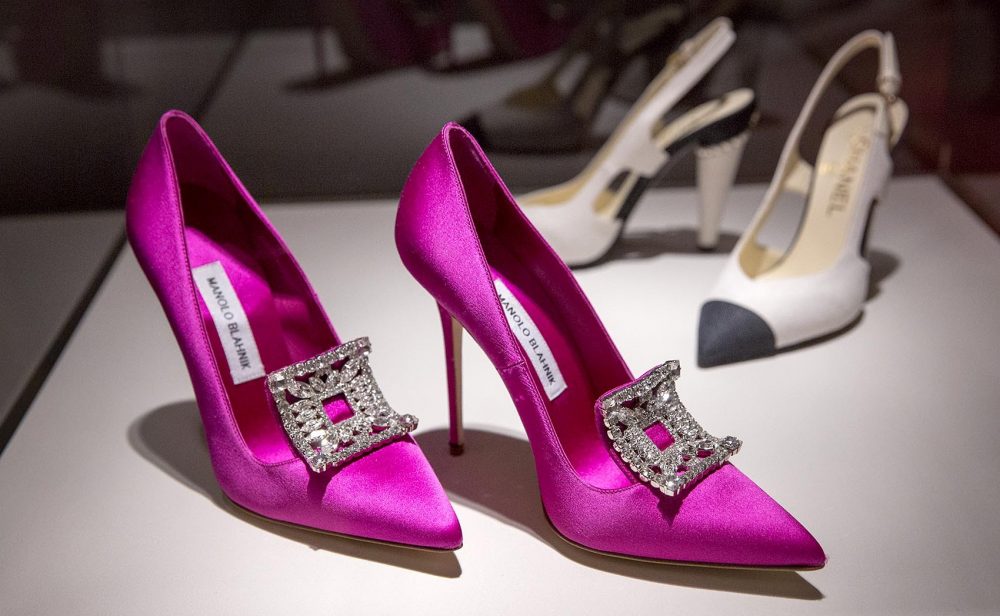

"Shoes: Pleasure and Pain" is on display until March 12, 2017. Through Nov. 27, visitors can donate lightly-worn, professional women's shoes at the PEM that will go to the non-profit organization Dress for Success Boston.
This article was originally published on November 18, 2016.
This segment aired on November 18, 2016.
